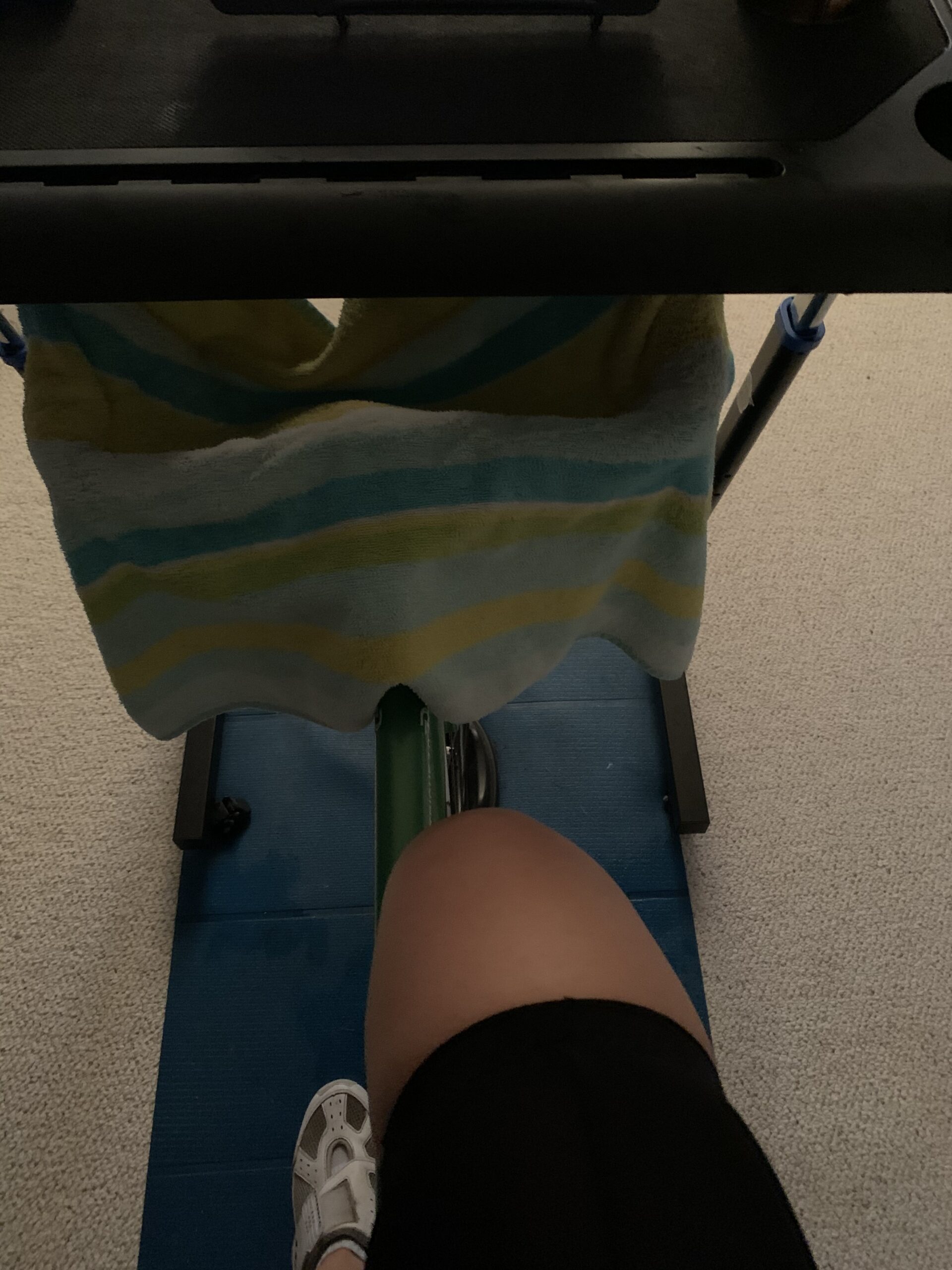
Most failures are one time costs. Most regrets are recurring costs. The pain of inaction stings longer than the pain of incorrect action.
James Clear

Most failures are one time costs. Most regrets are recurring costs. The pain of inaction stings longer than the pain of incorrect action.
James Clear
A couple of months before my full ironman race was supposed to take place, I woke up in full panic mode that I have to figure out my race nutrition and hydration. I’d recommend planning for these over a course of multiple months (and training sessions), but those aren’t the only parts of pre-race prep you have to figure out.
Preparing for the race will include multiple steps:
So you booked a destination race? Awesome! Some place pretty and fun to do your thing. It’s all great until you realize that you have to get there and find a place to stay. Even if you’re racing in a huge tourist destination (like NYC), you need to get moving on finding a hotel. I am planning on racing in Ironman Maryland and one thing became obvious quickly: there are not enough accommodations around. To be fair, same issue popped up during Luray Triathlon. I think that Vermont City and Disney World were the only places where finding hotel was easy. But I messed other things up in there, which I will get to later.
Getting to your destination sure is an important part of this puzzle, too. Make sure you know when you’re supposed to pick up your bib and what-nots, as well as check in your gear (more relevant to triathlons than running, but still something to keep in mind). Based on that, pick what’s the latest you can arrive. Spare a thought to level of difficulty of travel and time changes. You don’t want to arrive on Friday after being cooped up on a flight for 12 hours and then race on Saturday, while dealing with a 5 hour time change. If you’re crossing time zones, make sure you travel early enough to adjust. It’s half a problem if you’re going west, so you can get up a bit earlier. But imagine me flying from the east coast of the US to Poland for Ironman 70.3 Gdynia – that’s getting up in the middle of the night!
Something you may not have thought of: heat and altitude acclimatization. I ran in Florida in January. It was in the 80s there, while it was freezing back home. Heat was tough! Altitude make cause issues as well. If you live at sea level, being a mile high in Denver will be a challenge. Remember that moving vertically is hard on your body even if you are inactive. Racing for an extended period of time will be a whole another thing!
In short: plan your arrival and accommodations to make sure you are well-rested and able to wake up on time for your big day.
Something that merits a second thought: after the race, you will be tired and in need of a shower. Consider having a place for the night after. When I raced Philly marathon, I went home right after. It was ok thanks to an awesome friend, but I felt pretty gross without access to a shower for multiple hours after.
Plan your meal for the night before (check out this article on carb loading properly)! This part of pre-race prep is easy to forget, but it doesn’t mean it’s not important. Before running Philadelphia marathon, I didn’t give much thought where I would eat dinner the night before. It was hard to find a suitable dinner (and my friend actually was opposite to helpful on that). So check for restaurant availability beforehand. For example, I already know that I need to bring microwaveable bowl of pasta for my pre-race dinner in Ironman Maryland. You can’t say I don’t learn from my own mistakes 😉.
Don’t forget to come up with breakfast… Many races start early in the morning and it’s not guaranteed that where you’re staying will provide food, especially at that kind of hour. I mean: Disney marathon started at like 5am. When in doubt, go to a nearby store and get some pastries and such for breakfast.
Plan this! I have messed this one up… I’m a city dweller who lives not far from a large airport, so I assumed that when I get to Vermont, I will always be able to get a cab or Uber to the starting line. Guess what? Burlington, VT doesn’t have much of either and I had to bum a ride off another racer. Not an experience I wish to ever repeat… When I did Walt Disney World Marathon, on the other hand, I didn’t realize that getting back to the hotel would be such a problem. Getting to the starting line was easy enough – my hotel had a shuttle. Getting back required taking a shuttle to one of the resorts and getting a ride to Disney Springs. By then though, there was a ton of people around and everything was packed. I don’t even remember how long it took me to get back. I’m pretty sure I blocked it out.
Oh, and let’s not forget that once I got to Disney Springs, I realized I need to climb these stairs:

Don’t be an idiot like me, plan your travel to the starting line and from the finish line.
Whether it’s a race going in front of your house or you travel away, make sure you have packed everything you need. I will use a triathlon as an example, as it’s more complex and lends itself better to examples.
When traveling to Poland, I forgot my belt for bib number. Yes, they gave me one with the bib. Guess what? I broke it immediately… Make sure you have everything you need long enough before travelling, so if you are missing something you can order it on Amazon or run to your local bike or running shop. You don’t need to compound your pre-race jitters by missing some key item.
Check what you will need on the course. When racing in Luray, I didn’t have much water with me. I assumed there would be plenty of aid stations along the way. It was super hot on the day and they had very few water stations. I only remember one (although it doesn’t mean there wasn’t another one). So: water and nutrition if appropriate. Check course map to see if the race organizer will provide. Another thing I learned the hard way: if you’re racing in a city, people will hand out candy, fruit, drinks (skip the beer!) along the route. But if it’s in the middle of nowhere, you’re on your own. And let’s face it: bike courses in triathlons will have long stretches far away from people. Pack water and food. Better to bring some home than run out.
If you’re biking for any part of the race, bring your own bike maintenance tools and spare tires. We all hope that they won’t be necessary, but hope is the mother of fools as the saying goes. Oh, and learn to use them. Just a couple of weeks ago, I realized I have never changed a bike tire. I proceeded to learn it on a flat tire of my indoor bike. Good thing – it took forever, I ended with a sliced finger, covered in grease and exhausted. So in your pre-race prep, make sure to learn how to do all you may need to do.
I already mentioned that you need a way to get home after… But that’s not all you will need. Plan for what you will eat. Some events have food trucks, parties, are near restaurants. Some are not. Check it ahead of time and either pack your food or plan how to get to it after the race.
More importantly though: make sure you don’t give yourself hypothermia. It’s amazing how fast you can get cold once you stop running! Many races give out space blankets, but not all. Have a friend wait for you with a sweater or pack it in the post-race bag. I had this issue both after Baltimore and Vermont City marathons. You’d think I’d learn… The issue was that sun hid in later parts of the day and it felt cold. Ah, those were moments I could dream of while overheating during my ridiculously hot Disney Marathon 😉!
I hope we will all race again soon! In the meantime, keep training!

Be brave or forever wish you had been.
Abigailgazda.com

I am always doing what I cannot do yet, in order to learn how to do it.
Vincent Van Gogh

I know I’ve switched to writing only every other week. What can I say: I’m an accountant and this is audit/ tax season. I’m sorry and I hope you can all forgive me!
Recently, I’ve been struggling with coming up with new, interesting subjects for blog posts. If you have any suggestions/ requests – please let me know!
I already tried crowd-sourcing subjects on twitter and I got one answer: focusing during long cardio sessions. I have to admit that it never crossed my mind to write about it, but it’s such an obvious subject! Endurance athletes have to perform the same task for extended periods of time and it’s only natural that your concentration will waver. I know that indoor bike trainer is a killer for me – how can you keep pedaling hard when you’re not getting anywhere???
My old go-to is zoning out. It sort of works on a treadmill – you set a speed and then just maintain enough focus not to fall off or run into the control panel. It’s not that simple on a bike trainer, while swimming or during outdoor workouts. Even following a pacer may not keep you going at the right speed.
In experiments, though, athletes who maintain focus in endurance training (or races) do better than those who are ‘zoned out’. Duh… You do much better work when you are paying attention to what you are doing! Although it is harder when you are alone on a country road…
More on the issue of importance of your brain in cycling can be find here – in case you want to explore the whole issue. Right now, let’s stick to the focus in endurance training when you’re talking about those long workouts.
Think of your focus as another muscle you need to train. Try being super focused for a couple of minutes at a time and over many rides, you will get better at it. Kids usually can’t sit for a long time, but as they get older and practice it in school, they learn to manage (well, most of them and most of the time). It’s the same for your lengthy cardio sessions – you can train yourself to get better.
I think I have mentioned before that on runs, I sometimes repeat ‘just keep running… just keep mommy-ing…’ kind of like Dory in ‘Finding Nemo’. Not exactly state-of-the-art, but it works, especially when I’m hitting the wall. My brain may not be capable of a more complex thought by then!
You know the whole ‘just to that tree’ thing? I think that runners are more adept at this than cyclists (and it’s not great for swimming). It’s less overwhelming and gives you something to focus on.
This is a trick I have discovered not that long ago (sadly, it took me a while to figure it out on my own) that my indoor rides when I do intervals feel a lot shorter and less (mentally) exhausting than just ‘flat’ rides. Anything that breaks up the monotony is your friend!
Not always easy, but running/riding with others helps you with not drifting off. If you start slowing down, you will notice your companion riding away from you and will snap back into it. I think that’s why Zwift and the likes are so popular: it gives you both variety and other riders help motivate you to keep going.
One of the reasons for losing focus during a long workout may be hitting the wall. To prevent it, make you to fuel right (see this post for advice on that). Being thirsty or hungry makes it a lot harder to pedal/ run/ swim hard. Your lack of focus is your body alerting you to a growing problem!
This one covers a lot… If you’re on a treadmill, having some sort of distraction is helpful. Machine makes sure you keep your pace and everything else is boredom. So music, movie, whatever keeps your mind occupied will work. Personally, I have a thing for movies/ shows with a lot of fight scenes (you can judge if you want, but I don’t care – it works for me).
Sadly, that doesn’t work as well on a stationary bike. The moment your mind wanders away, you slow down. So you do need to find something entertaining, but not so much so that you won’t watch your pace. I would recommend music with a strong beat, so you can match your pedaling to the music.
When you are outside, entertainment may just come to you. Admiring views, people-watching, making sure you don’t veer off into a ditch… Plenty of things to think about! This actually makes trail running a strong choice: your activity demands enough attention that you are more likely to stay focused.
So this is a trick I tend to use while swimming, especially in open water, where entertainment is scarce at best: focus on something specific in your movement. My go-to is counting my breaths and focusing on doing them right every third arm stroke. It both calms me and gives me rhythm. I was told that some of the pro runners can hear their heart rate and synchronize it with their step. You won’t be catching me doing it, but the point is: they are focused on some part of their activity.
When you are on a ‘dreadmill’, you can easily set a speed, incline and time/ distance you want to go and just plow away. It gets harder to keep going if you keep seeing how slowly the time is moving forward. If you have a hard time resisting looking all the time (and for some of us, like me, those numbers are so close to eye level that they are hard to ignore), cover them with a towel or something.
There is some irony to the above paragraph, since when I work out on an indoor bike, I have to look at some sort of stats at all times. It’s either console or my Garmin app showing my heart rate. Otherwise I just kind of slow down and go easy… So yeah, test both and see what works better for you.
So what’s the secret to focus in endurance training? Well, it’s mostly finding what works for you and understanding that different days and workouts may call for different solutions. But one thing is for sure: go out there, work on it and enjoy!

You don’t make progress by standing on the sidelines, whimpering and complaining. You make progress by implementing ideas.
Shirley Chisholm

Make your life a masterpiece; imagine no limitations on what you can be, have or do.
Brian Tracy

Some of you may recall that before COVID craziness started, I got to attend an event with Meb Keflezighi and he advised me to incorporate trail running into my training routine. It may have been a while, but I decided to finally give more thought to (and do more research on) this subject.
For a while, I used to run mostly on trails. It was when I lived in California along the Pacific Coast. It was amazing! However, I later moved and switched to road (and treadmill 😐) running. When I went on my favorite route a few years later, I ended up with my back and joints hurting. I will skip the part where I slipped into a ditch…
Isn’t being out in the nature benefit enough? Fresher air, nicer views, more me-time… Sounds delightful!
If that doesn’t convince you though, here are a few more:
I know I said tons of amazing things about trails, but it doesn’t mean there aren’t any ‘challenges’ associated with it. You know, like the aforementioned face-planting. When you run on trails, you will slip, trip and step into ‘unknown substances’. Hopefully, you won’t get actually hurt. But it is part of the charm. You may want to bring a first-aid kit with you, especially if you’re running a longer distance or are particularly clumsy (🙋♀️).
Getting lost is a serious possibility if you’re running through the middle of nowhere, surrounded by trees and such. My trail runs in California were on the bluffs, so getting lost was not a threat – I had the ocean on one side and the road on the other side was never further than like a mile away. Hard to get lost there! Always make sure you know where you’re going and how to get back.
Wildlife. It’s one of the benefits, isn’t it? You know, like that bird who tries to steal women’s hair by the lake near my house 😆. But seriously: some of those guys can be dangerous. And I am not even talking about skunks with rabies (yep, that’s in my neighborhood, so top of the mind!). Know what kinds of animals you can expect in your area and what to do if you encounter them.
Do you think there are no running trails where you live? You may be surprised to find out they are hiding in plain sight! If you are just starting to dabble in trail running, you may not need much. Around me, there are dirt paths along the paved roads or just a few yards away. It’s easy not to get lost and you can always abort the mission should you decide it’s not for you or have to bail for whatever other reason. I know it’s a very beginner level, but may be a wise place to start if you’re a complete novice. Later, you can look for something more interesting.
Once you decide you want a real trail, there is a number of ways to find them. Simple one: just look at a map of your area. All those green areas? Chances are there are tails in there. Running groups and running stores will most likely be able to provide you with good ideas, too. Trail Running magazine has some advice on interesting destinations here. And, as always: google it or visit a national park.
First and foremost, if you’re going to run on trails regularly, you need to invest in appropriate shoes. Road shoes are awesome, but they don’t account for some unique needs on a trail. Trail running shoes tend to be closer to the ground (to decrease a change of rolling your ankles), have bigger treads (to help you stay attached to the ground when it gets slippery) and generally heavier-duty, since you are definitely using them more intensely when the terrain gets rougher.
There is a number of other things you need to take into consideration on a trail, like water. You may be used to having water fountains where you run. Chances of finding one on a trail are low. And water in rivers may not be safe for drinking. On my regular runs, I like to bring a bottle. This won’t work well on a trial – you need your hands for balance and dealing with obstacles. Thus, consider a water pack, hydration belt or vest.
Hat, glasses (either sun or clear), long pants – you may want to look for stuff that will protect you from the fabulous ‘nature’ you will be surrounded by. If your trail has a lot of spots with bushes and rough, tall grasses, you may want to wear long pants or tall socks. Otherwise you end up scratched up. If you are a woman who is fond of short dresses, it may make for an embarrassing look. Glasses are helpful when there are branches eagerly waiting to poke your eyes out. And hats – well, I always wear something on my head when I run. Sun, branches, crazy birds… So many reason to cover your hair!
Navigation tools or something of the sort – you don’t want to get lost! When you’re running in the wild, it’s really easy to take a wrong turn. You may think ‘I can trace my steps back’. But can you? You were running, getting tired. Are you sure you paid enough attention? And keep in mind that you are going from the opposite direction, so it will look different. Make sure you have a way to get yourself back safely.
I hope to see you on the trails this season!

Be stubborn about your goals, and flexible about your methods.
Unknown

If you do what you always did, you will get what you have always gotten.
Tony Robbins